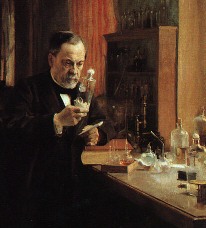GREAT WALL OF CHINA History of the Great Wall of China: The Great Wall of China is the national military defense project in the cold weapon war era with the longest time and the largest amount of construction in the world. It condenses the sweat and wisdom of our ancestors and is the symbol and pride of the Chinese nation. According to historical records, since the Warring States period, more than 20 vassals and feudal dynasties have built the Great Wall. The earliest was the Chu Kingdom. To defend the nomadic or enemy countries in the north, they began to build the Great Wall. Subsequently, Qi, Yan, Wei, Zhao, Qin, and other countries also began to build their own Great Wall for the same purpose. After Qin unified the six countries, the famous emperor Qin Shihuang sent Meng Tian northward to the Xiongnu, connecting the Great Walls of various countries. From Linyao in the west to Liaodong in the east, it stretched for more than 10,...

- Occupation: Chemist and microbiologist
- Born: December 27, 1822 in Dole, France
- Died: September 28, 1895 in Marnes-la-Coquette, France
- Best known for: The discovery of vaccinations, pasteurization, and proving that germs cause disease.
Early Life
Louis Pasteur was born in Dole, France on December 27, 1822. His family was poor and during his early education he was an average student who enjoyed art and singing. However, when Louis was exposed to science as a teenager, he knew he had found his calling.

Louis Pasteur by Albert Edelfelt
College and Career
In 1838, Louis went to college to become a science teacher. He earned degrees in mathematics, physics, and chemistry. He then became a chemistry professor at the University of Strasbourg.
While at the University he fell in love with the daughter of the university's rector, Marie Laurent. He and Marie married in 1849. They had five children, however, three died young from typhoid fever. It was the deaths of his children that drove Louis to investigate infectious diseases in order to find a cure.
- Bacteria and Germ Theory
During Pasteur's time, people believed that microbes such as bacteria appeared due to "spontaneous generation." They thought that the bacteria just appeared out of nowhere. Pasteur ran experiments to see if this was true. Through his experiments he proved that germs (i.e. bacteria) were living things that came from other living things. They didn't just spontaneously appear. This was a major discovery in the study of biology and earned Pasteur the nickname the "Father of Germ Theory."
Pasteurization
Pasteur used his knowledge of germs to investigate how beverages such as wine and milk were spoiled by microbes such as bacteria and molds. He found that heating up the liquids would kill most of the microbes and allow the beverages to last longer and be safer to drink. This process became known as pasteurization and is still done on many foods such as milk, vinegar, wines, cheese, and juices.
Silk Worms
As Pasteur learned more and more about bacteria, he began to think they may be the cause of disease in humans. When the French silk market was threatened by a disease to silkworms, Pasteur decided to investigate. He discovered that this disease was caused by microbes. By eliminating the microbes from the silkworm farms, he was able to end the disease and save the French silk business.
Pasteur continued to investigate with diseases. He found that he could make a weak form of a disease that would cause people to become immune to the stronger form of the disease. He called this weak form a "vaccine." He first discovered this by working with cattle on the disease anthrax. The first vaccine he gave to a human was the rabies vaccine. He administered it to a nine year old boy name Joseph Meister in 1885.
Today Louis Pasteur is known as one of the most important scientists in history. His discoveries led to an understanding of microbes and diseases that has helped to save millions and millions of lives.
Pasteur is most remembered by the Pasteur Institute which he established in 1887. Today the Pasteur Institute is one of the world leaders in battling infectious diseases.
Louis Pasteur died in 1895 from a stroke. He was buried in the Cathedral of Notre Dame in Paris, France.
Interesting Facts about Louis Pasteur
- Early on in his career Pasteur studied crystals and discovered why some crystals bend light while others do not.
- He was a deeply religious Christian throughout his life.
- Pasteur's ideas on micro-organisms causing disease eventually led to the boiling of surgical instruments helping to prevent infections and causing many people to survive surgery.
- He once said that "In the field of observation, chance favors the prepared mind."
Comments
Post a Comment
Please do not enter any spam link in the comment box.